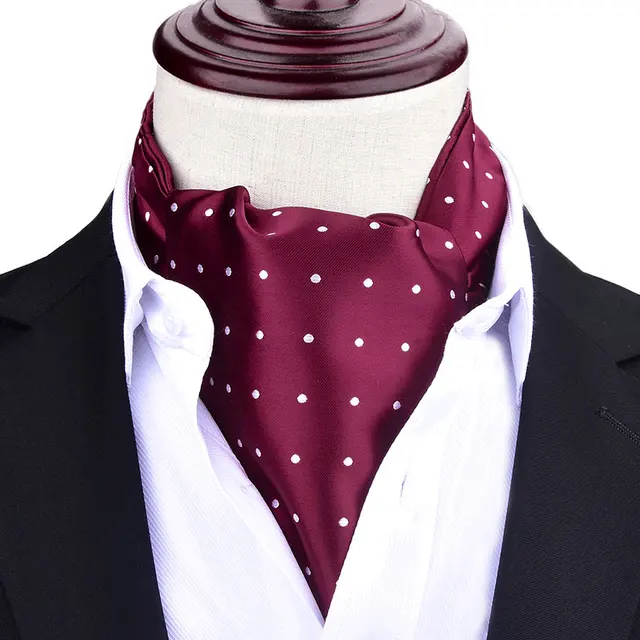
The Ascot tie, a sartorial emblem of refined elegance, has a storied history deeply rooted in 19th-century fashion and British aristocratic circles. Originating from the prestigious Ascot Racecourse, this neckwear holds a distinctive position in men’s fashion.
Ascots trace their roots to the late 19th century, gaining popularity during the late Victorian and Edwardian eras. Named after the renowned Ascot Races, where it was initially worn, the tie first emerged as a more relaxed alternative to the formal cravat, offering a comfortable yet sophisticated option for gentlemen.
The Ascot tie’s design comprises a wide, flat bottom and a narrower neckband, creating a cravat-like appearance without the intricacies of tying a traditional cravat knot. This unique structure allowed wearers to achieve a refined, semi-formal look without the bulkiness of a full cravat.
Initially, Ascots were predominantly worn during the day, paired with morning suits or formal daywear. The tie’s versatility allowed men to transition effortlessly from formal events to more relaxed settings, making it a staple in a gentleman’s wardrobe for various occasions.
During the early 20th century, the Ascot tie faced a decline in popularity, giving way to other neckwear styles. However, it experienced a revival in the 21st century, as contemporary fashion embraced classic styles. The tie resurfaced as a symbol of vintage sophistication, making appearances in formal events, weddings, and period dramas, reflecting its timeless charm.
The Ascot tie’s resurgence also owes credit to its versatility. Its adaptability to both formal and semi-formal settings, coupled with the ability to complement different collar styles, contributed to its renewed appeal among modern dressers.
Various materials, patterns, and colors now characterize Ascot ties, ranging from classic solids and stripes to bold prints and luxurious fabrics. These variations allow wearers to express individuality while adhering to the tie’s distinguished legacy.
In contemporary fashion, the Ascot tie continues to be embraced not just for its aesthetic appeal but also for its nostalgic nod to classic menswear. Its association with refinement, combined with the ease of donning it, makes it a distinctive and sought-after accessory for those seeking a touch of timeless sophistication in their attire.
Conclusion
The Ascot tie’s enduring legacy stands as a testament to its remarkable journey through time, evolving from a staple of Victorian and Edwardian fashion to a cherished accessory in modern menswear. Its ability to blend refinement with effortless style has solidified its place as a symbol of timeless sophistication.
While its popularity waned at certain points in history, the Ascot tie’s resurgence in recent times attests to its timeless charm and adaptability. Today, it continues to hold appeal for those seeking a touch of vintage elegance in their attire, making appearances at formal events, weddings, and as a statement piece in everyday fashion.
The Ascot tie’s evolution, offering versatility without compromising on refinement, highlights its enduring relevance in the ever-changing landscape of men’s fashion. As trends come and go, this neckwear remains an iconic piece, weaving together the threads of tradition and modernity to maintain its distinguished place in the world of style.
